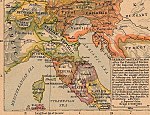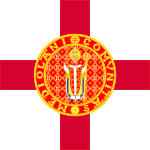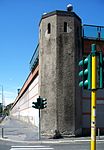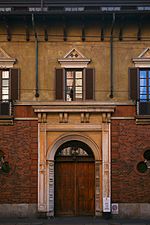Porta Magenta

Porta Magenta, formerly known as Porta Vercellina, was one of the city gates of Milan, Italy. The gate was established in the 9th century, with the Roman walls of the city; it was moved with the medieval and Spanish walls, and was finally demolished in the 19th century. The phrase "Porta Magenta" is now used to refer to the district ("quartiere") where the gate used to be; the district is part of the Zone 7 administrative division of Milan, west of the city centre. Both names "Porta Magenta" and "Porta Vercellina" refer to cities located west of Milan (respectively Magenta and Vercelli). The former name was after Vercelli as the gate controlled the road connecting Milan to this city; the latter name was chosen to celebrate the Battle of Magenta, a decisive victory in the Second Italian War of Independence.
Excerpt from the Wikipedia article Porta Magenta (License: CC BY-SA 3.0, Authors, Images).Porta Magenta
Piazzale Francesco Baracca, Milan Municipio 1
Geographical coordinates (GPS) Address Nearby Places Show on map
Geographical coordinates (GPS)
| Latitude | Longitude |
|---|---|
| N 45.466111111111 ° | E 9.1658333333333 ° |
Address
Piazzale Francesco Baracca
Piazzale Francesco Baracca
20145 Milan, Municipio 1
Lombardy, Italy
Open on Google Maps











